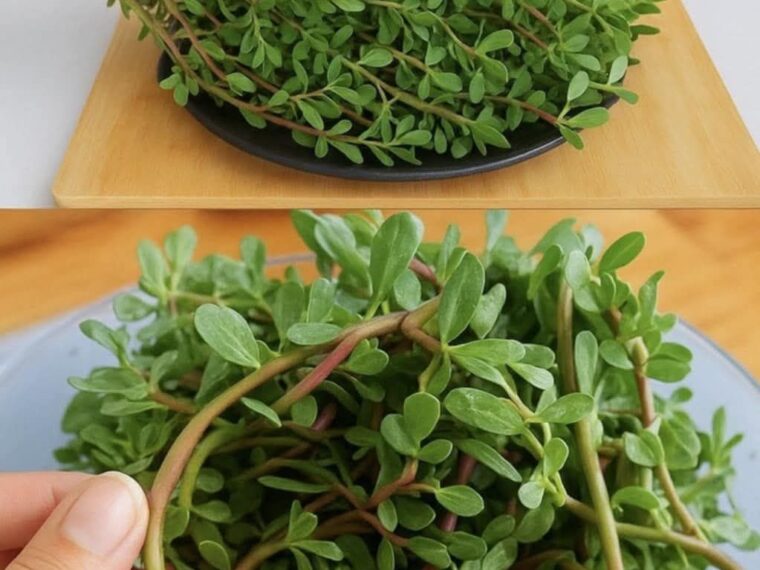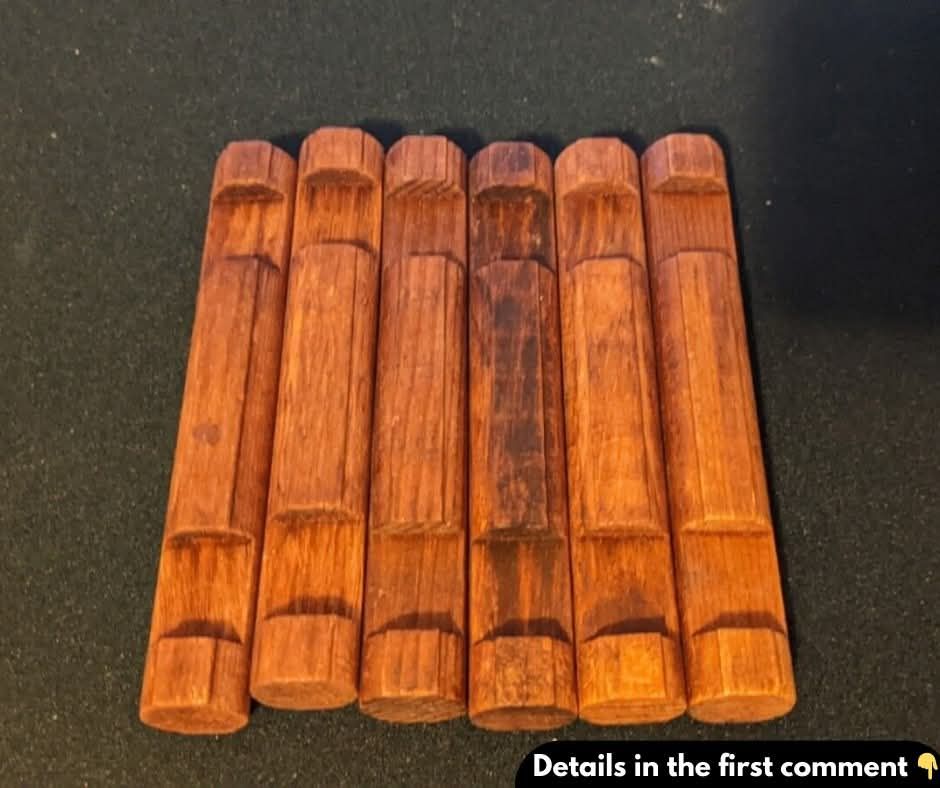If you don’t already have purslane in your yard, you might find it growing wild in parks, sidewalks, or empty lots. However, foraging comes with precautions.
When foraging purslane:
- Ensure Clean Sources: Avoid areas treated with pesticides or exposed to road runoff.
- Proper ID: Purslane has lookalikes, including spurge, which is toxic. Purslane has thick, succulent leaves and reddish stems. When in doubt, consult a local plant guide or extension office.
- Wash Thoroughly: Even if you’re sure it’s safe, always wash your wild-harvested greens thoroughly before consuming.
⚠️ Purslane Lookalikes: What to Watch For
A common reason people avoid eating purslane is fear of confusing it with toxic plants. The most dangerous lookalike is spotted spurge (Euphorbia maculata).
Key Differences:
| Feature | Purslane | Spotted Spurge |
|---|---|---|
| Leaves | Smooth, fleshy, spoon-shaped | Flat, thin, often with a purple spot |
| Stems | Reddish, thick, juicy | Thin, wiry, and hairy |
| Growth Pattern | Low, mat-forming | Also mat-forming, but less succulent |
| Sap | Clear sap | White, milky sap (toxic) |
If you see white sap when snapping the stem, do not consume it.
🌍 Cultural and Historical Uses of Purslane
Purslane isn’t just a modern-day superfood; it has a long history of use across civilizations.
- Ancient Rome & Greece: Used in traditional medicine and as a vegetable.
- Traditional Chinese Medicine: Known as “ma chi xian,” used for detoxification, cooling the body, and treating infections.
- Mexican Cuisine: Known as “verdolagas,” it’s commonly cooked with pork or added to stews.
- Middle Eastern Dishes: Popular in yogurt-based salads and savory pastries.
Its ability to grow in tough climates made it a staple for many indigenous and rural communities.
🌾 Companion Planting and Soil Benefits
Adding purslane to your garden isn’t just about food—it’s about function.
Soil Retention: Its dense mat acts as ground cover, reducing erosion and moisture loss. This is especially valuable in arid regions.
Natural Mulch: By covering soil, it protects from sun damage and helps retain moisture for other plants.
Soil Aeration: The deep taproot breaks up compacted soil and brings minerals like phosphorus and magnesium to the surface.
Companion Plants:
- Grows well with tomatoes, corn, and peppers.
- Can reduce competition from more aggressive weeds.
- Attracts beneficial insects like pollinators and hoverflies.
♻️ Sustainability and Low-Waste Living
If you’re passionate about permaculture, homesteading, or sustainability, purslane is a no-brainer.
- Zero Input Crop: No need for fertilizer, irrigation, or pesticides.
- Self-Propagating: Comes back year after year.
- Minimal Waste: Every part of the plant is edible or compostable.
Growing and harvesting wild plants like purslane also reduces your reliance on store-bought greens that are often packaged in plastic and shipped across long distances.
🐝 Purslane and Pollinators
Though its yellow flowers are tiny, they are beloved by pollinators like bees and hoverflies.
Letting purslane bloom in your garden can:
- Increase biodiversity
- Support your vegetable crops by drawing in pollinators
- Create a more self-sustaining ecosystem
In a world where pollinator populations are declining, even small plants like purslane play a big role.
🌡️ Purslane and Climate Resilience
With climate change increasing the frequency of droughts and extreme weather, plants like purslane are becoming even more valuable.
- Heat Resistant: Thrives in intense heat where other crops struggle.
- Drought Tolerant: Needs minimal water once established.
- Resilient: Can bounce back from being trampled or grazed.
In dryland farming systems or xeriscaping gardens, purslane provides greenery, nutrition, and soil protection without additional water or inputs.
🧂 Preserving Purslane for Later Use
If you have more purslane than you can eat fresh, you can preserve it:
- Freezing: Blanch and freeze for soups and sautés.
- Pickling: Makes a delicious, tangy addition to sandwiches and charcuterie boards.
- Drying: Dry for later use in teas or as a soup thickener.
- Fermentation: Combine with garlic, herbs, and salt for a probiotic-rich condiment.
🧘♀️ Final Thoughts: Embrace the “Weed”
Before you rip up or step on purslane next time, pause. This humble, sprawling plant has earned its title as a “gold mine” for a reason. It nourishes your body, supports your soil, and contributes to a healthier garden ecosystem.
In a world increasingly interested in sustainability, local food sources, and regenerative gardening, purslane is not just a weed—it’s a wise ally.
So, rather than fighting it, why not make space for it? You may just find that this once-overlooked plant becomes a beloved staple in both your kitchen and your garden.





